Looking to Save Energy in Your Tampa Home? Get Started Today With These Tips
Summertime energy bills in the Tampa area skyrocket, but there are ways to save energy at home without investing a lot of time or money. These tips might help you lower those bills without sacrificing your comfort.
- If you haven’t already, change your incandescent light bulbs to LED or CFLs. Note how many light bulbs you need for closets and bathrooms, and choose LEDs for those spaces. CFL bulbs burn out faster if they’re turned on and off frequently.
- Check the water heater’s setting and turn it down to 120 degrees F. Next to cooling homes, heating water is the second largest energy expense in most households. Use the heat setting for the dishwasher if you want hotter water to sanitize your dishes. Use hot water sparingly for the laundry and wash only full loads in the dishwasher.
- Examine the condition of the air filter for the air handler. A dirty filter increases the amount of time your cooling system has to run, driving up energy bills. Although it’s best to replace the filter when it’s dirty, knocking off the dust and re-inserting it will give your system better efficiency until you buy a new one.
- Clean the outdoor condenser to save energy at home. Over time, debris and vegetation can collect around the condenser that blocks airflow through the condensing coil and fins. A gentle spray of the hose can remove the grime.
- Collect all the chargers you use for portable devices and label them. Plug them into a power strip and either turn the strip off or unplug the charger when it’s finished. Many chargers draw power even after they’ve finished charging the device. It may not seem like you’re using much, but the U.S. Department of Energy estimates the typical American household spends $100 a year on so-called vampire power consumption.
The pros at Cox Air Conditioning & Heating can help you save energy at home by evaluating and servicing your cooling system. We’ve provided exceptional HVAC services for the Tampa, Clearwater, St. Petersburg, Trinity, Palm Harbor and West Chase areas since 1958.
Use Programmable Thermostats Properly to Maximize Cooling in Your Clearwater Home
A programmable thermostat can keep your home comfortable while maximizing your summertime energy savings. However, unless it’s used correctly, it will not do its job. Learn how to make your Tampa-Clearwater area home more comfortable while saving money at the same time.
Use programmable thermostats properly to manage your air conditioner. Select the model that best fits your lifestyle.
- A 7-day model is excellent if your daily schedule varies greatly from day to day. It gives you the flexibility to set different programs on different days to meet your schedule.
- A 5+2 day model uses the same schedule Monday through Friday, with a different schedule for the weekend.
- A 5-1-1-model is best for those who have a regular schedule through the week, but varying schedules on Saturdays and Sundays.
Set your HVAC thermostat program based on your schedule. Each day will have four settings: wake time, daytime, evening time and sleep time.
- Wake time should be when the first person in the house gets up for the day, and at a setting that’s about 78 degrees in the summer.
- Day time begins when the last person leaves for the day. The setting should be at an energy savings level, usually 7 to 10 degrees higher than wake time.
- Evening time starts when the first person returns from work or school. The setting should be at a comfortable level (about 75 degrees in summer, more or less depending on your preference).
- Sleep time begins when the last person goes to bed usually. The setting should be set 4 degrees higher than evening time, but not as high as daytime. This saves money without heating up the house at night.
Use the thermostat wisely:
- Install the thermostat on an inner wall, away from windows and heat producing appliances.
- Use the “hold” button only when going away for the weekend or on vacation.
- Resist the urge to override the programmed settings, unless someone is in the home at an unusual time.
If you want to learn more about programmable thermostats, contact us here at Cox Air Conditioning & Heating. We are your Clearwater and Tampa area home comfort specialists.
Image Provided by Shutterstock.com
Dirty Air Filter: 3 Problems It Can Cause
Although the air filter may seem like a minor part of your home’s HVAC system, its job is essential to keeping your family healthy, keeping your home clean and comfortable and prolonging the life of your HVAC system. Changing a clogged or dirty air filter may be inconvenient and messy, but by doing so in a timely manner, you can help prevent the following problems:
Reduced System Airflow
A dirty air filter will reduce the airflow through the forced-air cooling or heating system, which not only decreases your comfort level, but forces the HVAC system to run longer and work harder to move the air. This can prematurely wear out sensitive system components including compressor motors, blower motors, fan motors, pulley bearings and belts. Air conditioners may begin to freeze up if the reduced airflow slows the heat absorption in the evaporator coil, or furnaces may stop heating when the reduced airflow in the heat exchanger causes that component to overheat, shutting off the burners. Additionally, because the system is running much less efficiently, your utility bills will increase, sometimes dramatically.
Higher Indoor Air Pollution
With a dirty air filter, airborne particles such as dust, pollen, pet dander and other harmful pollutants will remain in the air, continually circulating throughout the house. This can cause breathing difficulties for anyone living in the home, but the situation is much worse for those who suffer from allergies, asthma, emphysema or other respiratory illnesses. Checking the air filter monthly, and cleaning or replacing it when necessary, can help keep your indoor air quality high and your family safe.
Accumulation of Excess Dust
Without being removed by the air filter, dust will begin to accumulate in more places around your home, increasing your cleaning workload. In addition, the dust will begin to gather in the air ducts, costing you extra money to have them cleaned.
To learn more about the effects of a dirty air filter on your health and your HVAC system, consult our experts at Cox Air Conditioning & Heating. We have been serving Clearwater, Tampa, St. Petersburg and the surrounding areas since 1958.
Image Provided by Shutterstock.com
These Myths Can Undermine Your Energy Savings Every Summer
Energy savings in the summer months is a common goal of many Florida homeowners, but the following energy myths can actually sidetrack savings and result in higher maintenance costs and electrical consumption.
- Setting the thermostat way down cools your home faster. This is a myth if you have a single-speed cooling system, which most homeowners do. The cooling output is the same whether it’s set at 70 degrees or 80. The only kinds of systems that cool faster based on the cooling load are either variable-speed systems or those with a thermal expansion valve, found on newer, more efficient air conditioning equipment.
- Closing off a room saves energy. This can be an effective way to reduce energy costs, but only if the room is small and far from the air handler. Shutting off a room’s registers and closing the doors can increase the air pressure in the ductwork, which can force them apart. If your cooling system was properly sized when it was installed, closing off rooms can throw off the intended air balance in your home, possibly resulting in short cycling and other problems.
- Turning the system off when you leave saves energy. In a climate like ours, this can backfire in higher energy costs and system wear. When you do return, your equipment will have to work much harder to remove the accumulated heat and humidity. Instead of offering energy savings, the reverse occurs and the long running cycle can damage your equipment. This doesn’t mean, however, that it’s not a good idea to turn up the temperature eight to 10 degrees when you’re gone. A programmable thermostat will allow you to implement energy-saving settings for when you’re not at home.
- Keeping the ceiling fan on when you leave a room helps keep it cool. Ceiling fans move air, which is the only way they help you cool off. The perspiration on your skin dries faster when air hits it, creating the perception of being cooler. When no one is in the room, the fan is just using electricity without any cooling effect.
The pros at Cox Air Conditioning & Heating can show you a variety of ways to achieve energy savings with your air conditioner. We’ve provided superior HVAC services for Tampa-St. Petersburg-Clearwater area homeowners since 1958.
Image Provided by Shutterstock.com
Three Common A/C Problems Most Homeowners Will Encounter Eventually
When the summer heat turns on, your air conditioner should as well. During those hot Tampa-Clearwater days, you count on having a cool home to find relief in. When untimely problems occur, resolving the issue quickly becomes your main household priority. The good news is that some A/C problems are relatively easy to take care of and don’t require the know-how of a professional. Fixing the problem yourself is not only faster, but will save you money. Learn about some common A/C problems and what steps you should take to try and remedy them.
Common A/C Problems and How to Fix Them
The following A/C problems often have a simple solution that any person can handle. If the suggested course of action doesn’t fix the problem, or if the mentioned issues don’t apply to you, professional help is likely the way to go:
- Your system isn’t cooling your home well enough. Check the air filter and replace it if it’s dirty. Or try lowering your thermostat by five degrees. If that doesn’t help, examine your evaporator coil. If it’s coated in dust, cleaning it may repair the issue. If not, your unit may not be the right size for your home. Also, be aware that achieving a very cool environment can be difficult in extreme heat.
- The A/C is running, but not cooling your air. You should starting by checking your thermostat settings. Try the heating mode on your thermostat; if that doesn’t work, it probably means the problem is in your thermostat rather than your air conditioner. Look at the indoor and outdoor coils to make sure dirt and dust aren’t interfering with the heat-exchange process. Other causes, such as a faulty compressor, will require professional help.
- The whole system just isn’t working. Look for a tripped circuit breaker or blown fuse. The last thing you can try is lowering the temperature by five degrees to see if that triggers the system’s start.
For more tips on fixing A/C problems in your Tampa-Clearwater area home, or to schedule the help of a professional contractor, please contact at Cox Air Conditioning & Heating anytime.
Image Provided by Shutterstock.com
Don’t Let HVAC Efficiency Fall Through the Cracks
Since ductwork is mostly hidden behind walls or in the attic or crawl space, you probably don’t give it much thought. But it could be a major source of energy losses if it’s not properly constructed and well sealed. A typical house with central air conditioning and heating might lose as much as 30 percent of its cooling and heating energy due to ductwork problems.
Major ductwork repairs and duct sealing are jobs that are best left to HVAC professionals, but there are some things you can do before you call in the pros. Here are some basic do-it-yourself tips for increasing HVAC efficiency by repairing your ductwork:
- Inspect the ductwork – Look at the ducts that you have easy access to, such as those that run through closets or the attic. Take note of any duct joints that have come apart, flexible ducts that are crushed or kinked, holes in ducts, and ducts in unconditioned spaces such as your attic or crawl space that should be insulated.
- Make basic repairs – Use mastic to seal duct joints and seams. Common cloth duct tape isn’t adequate for sealing ducts since it deteriorates quickly under harsh conditions. Try to straighten any crushed or kinked flexible ducts. If they won’t hold their shape after you straighten them, replace them if they’re in easily accessible locations.
- Insulate ducts in unconditioned spaces – After you’re finished with basic duct sealing work, add insulation to ducts that run through your attic, garage, crawl space or other unconditioned areas. Heat transfer by conduction from uninsulated ducts can account for a lot of the energy losses from your system.
- Get professional duct sealing help – Major duct sealing, ductwork repairs and duct insulation jobs should be left to the pros. Your HVAC contractor can get to ducts in hard-to-reach spaces and will know how to apply the correct adhesives, clamps, screws and insulating materials to do the job right.
Call us at Cox Air Conditioning & Heating for help with HVAC Efficiency. The money you spend on ductwork repairs will pay for itself in reduced energy bills.
Image via Shutterstock.com
The Secret to Saving is Attic Ventilation
Effective attic ventilation plays a vital role in keeping your home comfortable on hot summer days. Passive ventilation via soffit vents and roof or gable vents will keep the air in your attic from getting excessively hot on sunny days, so your cooling costs will be lower and your roofing materials will last longer than they would with an unventilated attic.
Consider attic ventilation as one part in an overall system that also includes a well-sealed attic floor, adequate insulation and roofing materials that are appropriate for our Florida climate. Here are some things to consider as you work with HVAC pros to make your home comfortable and energy efficient:
- Seal air leaks – Be sure air leaks between living areas and the attic are blocked. Openings where wiring, plumbing stacks, ductwork or chimneys penetrate the ceiling should be sealed. Weatherstrip the attic access hatch so that air doesn’t leak around it when it’s closed.
- Add insulation – Adequate insulation will keep reduce heat transfer between the attic and living areas. Insulate ducts anywhere they run through unconditioned areas of the attic or crawl space.
- Don’t block soffit vents – When adding insulation, keep soffits and soffit vents open. Install barriers to keep blown-in insulation from filling soffits and keep airways between soffit vents and the attic open by stapling rafter vents to the roof decking between rafters where the decking meets the attic floor.
- Install the right number of vents – Work with your HVAC contractor to determine how many soffit, roof and gable vents you need for your house’s design and location. Roof vents and ridge vents can pose leakage problems, so you don’t want to have any more of them than you need for adequate attic ventilation.
- Choose shingles for our climate – White or light-colored shingles will reflect much of the incoming summer sunlight so that the attic doesn’t have to expel as much heat as it would with dark shingles.
Call us at Cox Air Conditioning & Heating for help keeping your home energy efficient and comfortable in every season.
Image Provided by Shutterstock.com
Spring Is Allergy Season: Improve Your IAQ
One of the best gifts you can give yourself if you suffer from allergies, seasonal or otherwise, is to improve indoor air quality St. Petersburg area home and consider adding an air cleaner to your home comfort system. You can more easily avoid avoid pollen and outdoor allergens in your controlled indoor environment, but still face allergens like dust mites, animal dander and insects which often trigger allergy symptoms. Improve your IAQ to reduce allergy and asthma symptoms. Here are some strategies for a sneeze-less spring allergy season:
Reduce Exposure to Allergy Season Triggers
- Close windows and doors at night and early morning when pollen counts are highest, and set your air conditioner on recirculate.
- Avoiding pets entirely cuts your risk of allergy flares, but the next best thing is keeping a short-haired pet and shampooing him/her often. Keep your pet out of the bedroom if possible.
- Avoid carpets and overstuffed furniture. Choose hardwood floors and sleeker furnishings when possible.
- Keep household surfaces clean and uncluttered.
- Encase mattresses and pillows in zippered, allergy-reducing covers.
- Wash bedding often in hot water.
- Get annual HVAC maintenance to help keep heating and cooling equipment clean and running properly.
- Clean floors/furnishings often with a HEPA filtered vacuum cleaner and/or special double filter bags.
- Wear a dust mask while cleaning your house.
- Use a damp or specially treated cloth when dusting.
- Leave the area for a few hours after housecleaning.
- Limit houseplants.
- Fix household leaks promptly and eliminate other causes of dampness.
- Thoroughly clean moldy surfaces.
- Control ants and cockroaches. Securely cover your garbage can. Opt for boric acid traps and poison baits, rather than chemical agents that can worsen your allergies and asthma flare-ups.
Keep Indoor Air Clean
- Use air conditioning with high-efficiency air filters compatible with your system. Change the air filter often.
- Some homes may benefit from duct cleaning.
- Keep indoor air dry and cleaner by using a whole-house dehumidifier and air cleaner, integrated with your central A/C. You’ll have cleaner air and inhibit dust mite and mold growth.
To learn more about how improve your IAQ to survive allergy season, contact Cox Air Conditioning & Heating today!
Image Provided by Shutterstock.com
Spring Is Prime Time for Air Conditioner Maintenance
Summer is fast approaching. Residents in some parts of the country would laugh at that statement, but here in Clearwater, FL, area, we know to prepare for its arrival in just a few weeks. That makes now the perfect time for Tampa area homeowners to schedule routine preventive air conditioner maintenance. This way, you can be sure that your air conditioner is ready to handle the heat and humidity we’ll get this year. Once the summer heat, rain and thunderstorms get started, your HVAC contractor will be very busy. Don’t chance a long wait for service.
Are You Using Your Programmable Thermostat To Its Fullest?
A programmable thermostat differs quite a bit from a traditional one. Instead of setting the thermostat manually, you pre-set the thermostat’s program to what temperature you want the house to be during what time frame. The thermostat takes over at this point, handling the temperature changes automatically. A homeowner can override and set the temperature manually when needed.



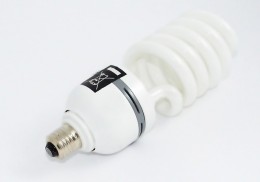
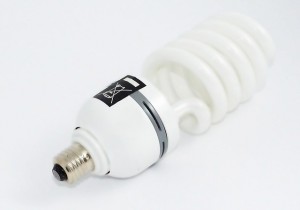
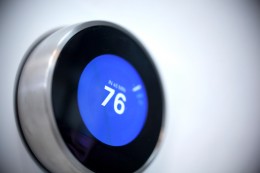
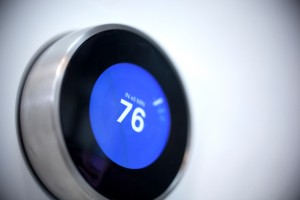



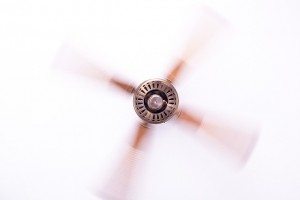
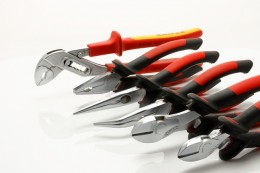
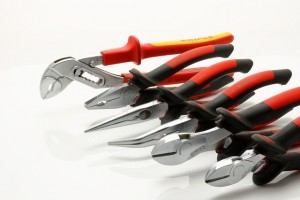
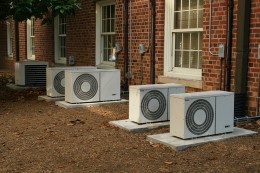
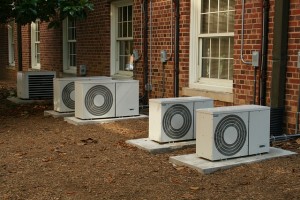
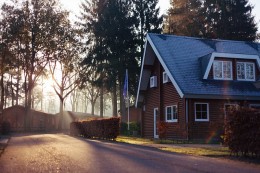
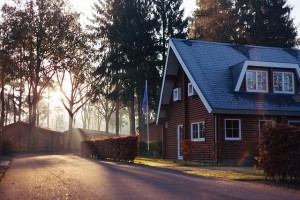





Recent Comments